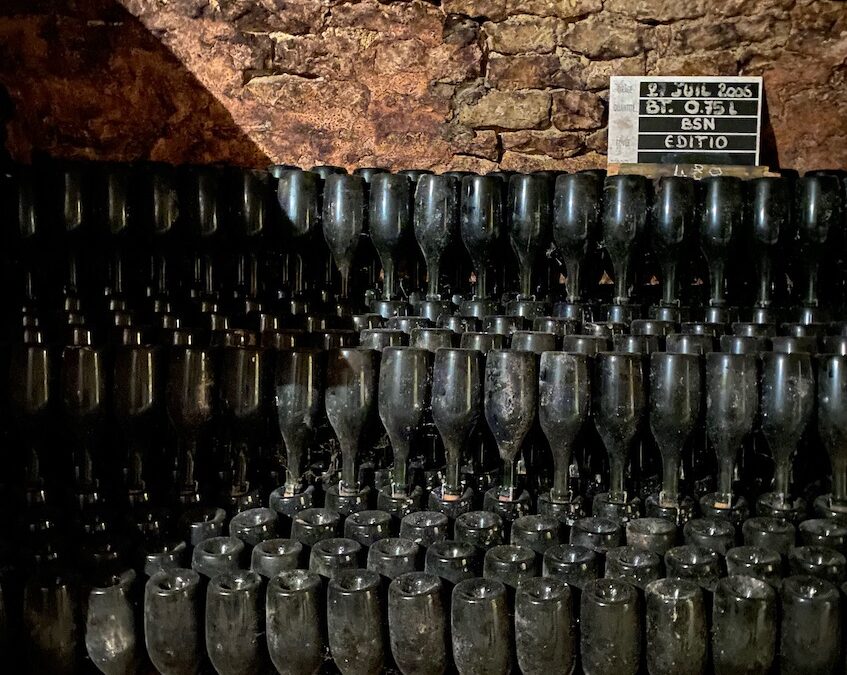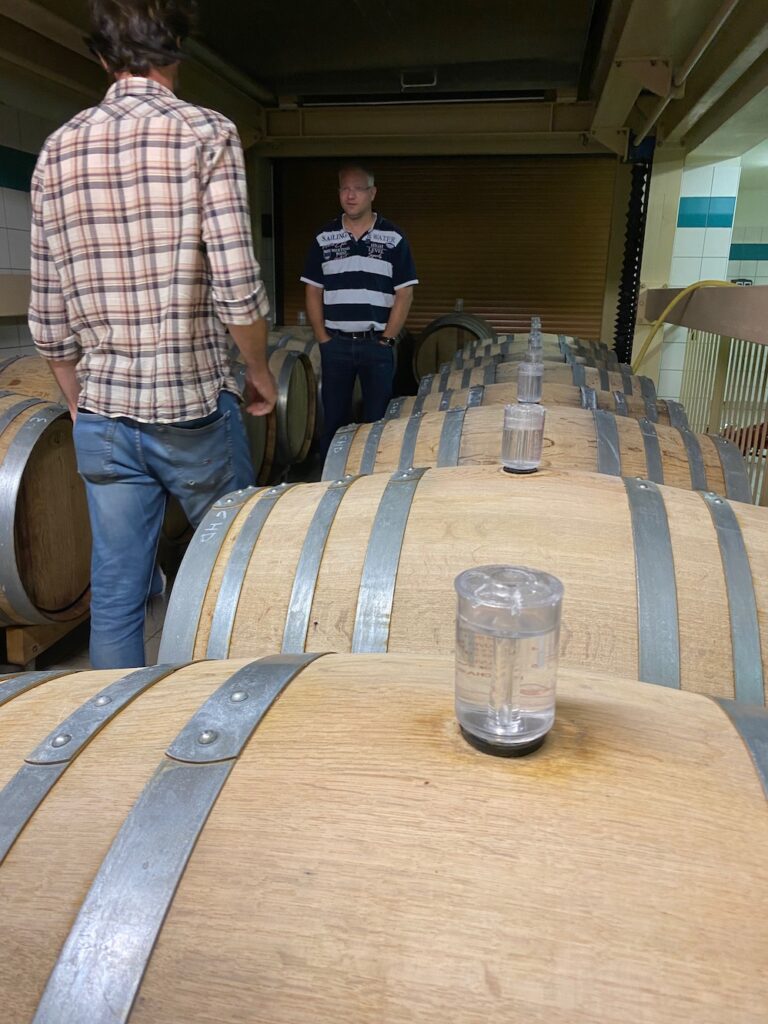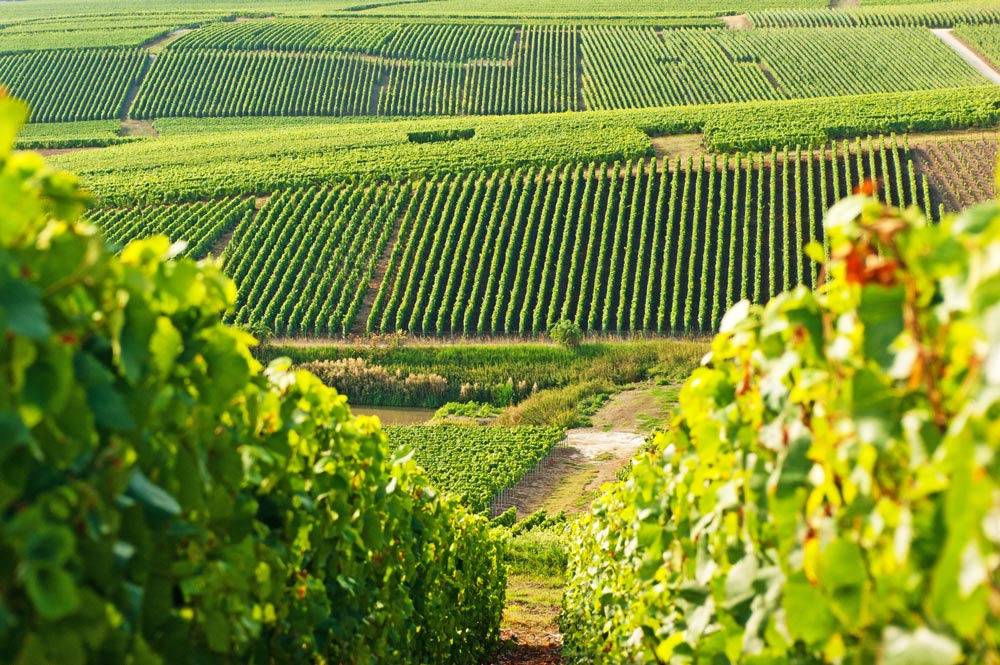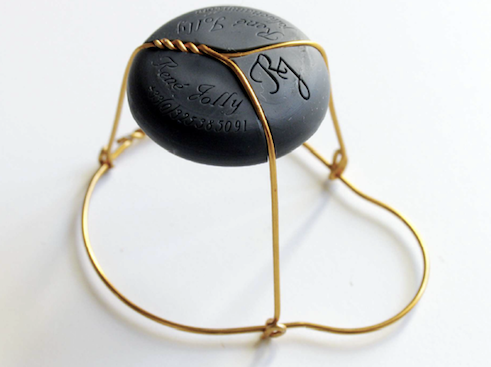
Champagne René Jolly – Where Tradition & Innovation Meet
Champagne is a wine region steeped in history and bound by customary laws and practices. It is not typically renowned for its progressive attitude, or indeed, propensity for innovation.
After all, what incentive is there to change or improve something that clearly works. Something that’s tried and tested, not to mention tightly regulated. Something that allows you to sleep safely at night, because you’re not gambling on ideas that might make a difference. Or that might help towards a bigger and nobler cause?
Fortunately, there are movers and shakers in the region who are bold enough to question the status quo. Who are free-thinking enough to explore beyond the boundaries and who are humble enough to care.
Fortunately, there are movers and shakers in the region who are bold enough to question the status quo. Who are free-thinking enough to explore beyond the boundaries and who are humble enough to care.
Who is Pierre-Eric Jolly?
Thankfully Pierre-Eric Jolly, a fifth-generation family vigneron (grape grower and winemaker), is one such individual.
He joined the family Champagne business in 2000, aged 26, under the watchful eyes of father Hervé and grandfather René.
No doubt inspired by his ancestors’ independent spirit. For example great grandpapa Charles chose to remain independent when the village attempted to form a co-operative cellar in 1930.
Pierre-Eric is both an artisan, respectful of regional ancestral customs, and a forward-thinking innovator. He’s constantly seeking to find more efficient and sustainable solutions without ever compromising on quality.
Spend any time with Pierre-Eric and you become enchanted by his positive energy. Even his surname can’t fail to make you smile!

Pierre-Eric The Artisan
A firm believer in sustainability and self-sufficiency, Pierre-Eric’s 13.5 hectares of vines are farmed organically (certified). This means no use of chemical fertilisers, insecticides or pesticides whatsoever. All grapes are harvested by hand and come exclusively from his village, Landreville.
All the key vineyard and cellar tasks are conducted by the same, few, full-time employees. And that includes Pierre-Eric himself, so they are totally autonomous.
He doesn’t buy in any grapes, so his champagnes are a true reflection of the five Jolly-owned vineyards. These plots hold up to 30 year old Pinot Noir and up to 40 year old Chardonnay vines.
Every bottle of Champagne that Pierre-Eric makes, that’s about 35,000 every year, is disgorged by hand, not machine. This is the traditional way without freezing the neck, otherwise known as ‘a la volée’. He can disgorge 350 bottles in an hour so you can do the maths!
By the way, if you’re wondering where exactly Landreville is, it’s in the outlying Côte des Bar sub-region of Champagne.

Where is the Côte des Bar?
It lies in the Aube valley, around one and a half hours’ drive south of Champagne’s epicentre, Épernay. Geographically and geologically, it has more in common with the neighbouring region of Burgundy (Bourgogne) than with Champagne.
Viticulture is nothing new to this satellite area and evidence confirms the presence of vines as far back as the early 18th Century. Although most of the grapes were sold to the more established houses further north.
Overcoming the north/south divide!
This trend continued right through the 19th and early 20th centuries. When Champagne’s official classification was drawn up in 1908, the big houses rallied together to ensure the Aube was excluded. Well you can imagine how that went down.
In true French fashion, riots ensued and eventually, around three years later, the Comité relaxed their attitude. But only enough to grant the Aube second-rate classification Champagne deuxième zone. Talk about sour grapes! It took a further 16 years, until 1927, before this was finally adjusted to create a level playing field.
Perhaps this partly explains the fierce independence and entrepreneurial flair among Côte des Bar producers. Either way, it’s good for the region.

Pierre-Eric The Innovator
When you open your next bottle of Champagne, just take a moment to look at the cage (aka muzzle). You know, the bit around the cork once you’ve peeled off the foil.
You should see four vertical lengths of wire down the neck of the bottle. There’s also a horizontal piece that winds around the neck to hold it firmly in place.
The ‘Muselet-Y’ is Pierre-Eric’s own ingenious invention that he created back in 2007. It loses one of the lengths down the neck forming a Y-shape over the capsule.
He used it on all his champagnes between 2012 and 2014. The benefit is a 40+% saving in wire versus the standard muzzle. This, in turn, saves 92% in energy to produce. Imagine the saving across millions of bottles!
In 2013, a firm in Reims took over the patents. They’re aiming to roll out this energy-saving design imminently so keep your eyes peeled!

The carbon cap
In 2009, Pierre-Eric co-invented the carbon cap which sits under the Muselet-Y on his top cuvée Editio. This is a Champagne that spends no less than 15 years ageing before being disgorged and released to the market. The carbon cap is a clever luxurious touch that highlights Pierre-Eric’s penchant for detail.
I’m fortunate to be able to call Pierre-Eric a good friend and have known him on and off for the past 8 years. To find out about my first enlightening visit to his cellars in Landreville (August 2021) see Meet the Enigmatic Pierre-Eric Jolly
